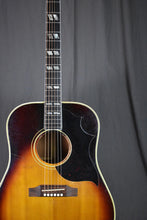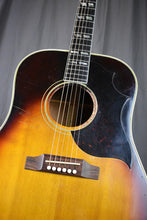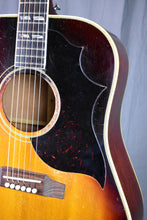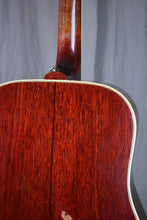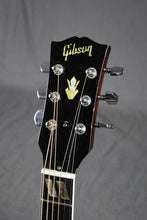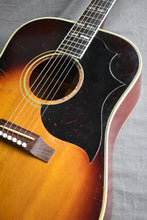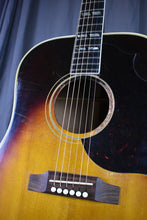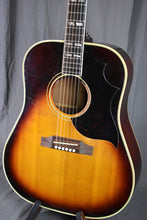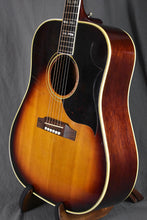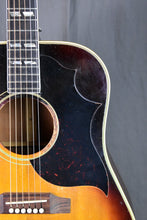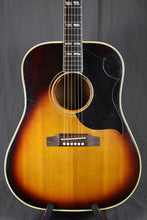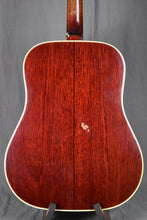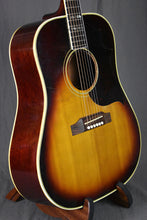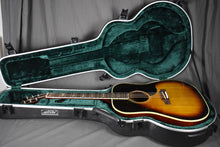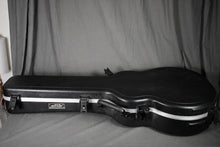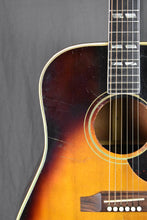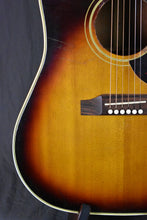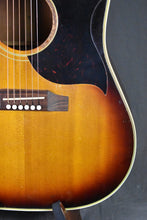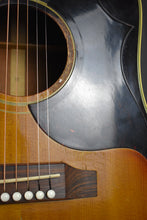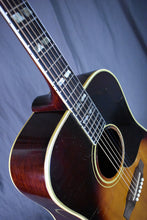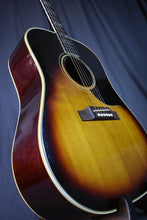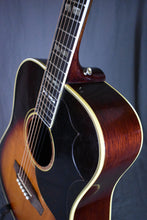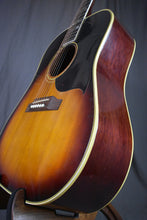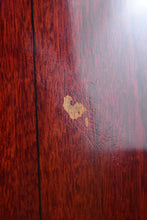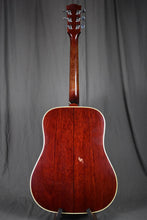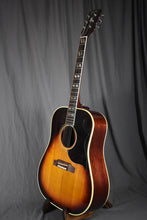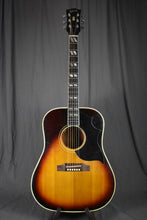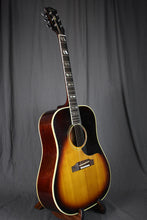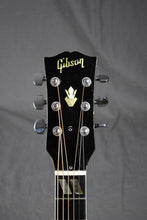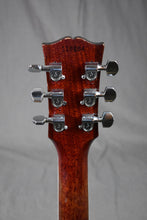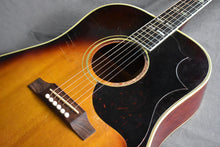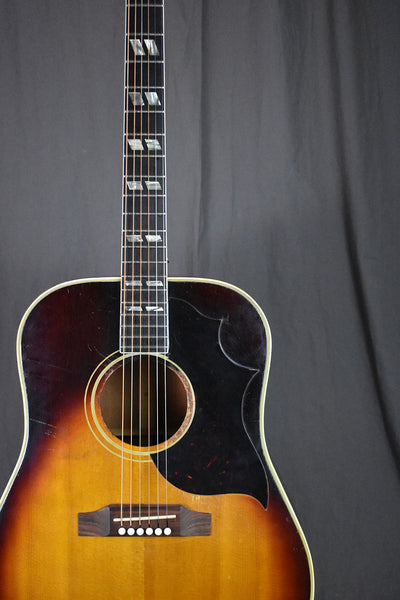When it was introduced in 1942, the Southern Jumbo had rounded, sloped shoulders. But in late 1962, Gibson changed the SJ over to a square-shoulder design, matching the shape of the popular Hummingbird. Structurally, the square-shaped Southern Jumbo was built like the Hummingbird, but it retained the same general features of the earlier round-shoulder model.
This 1963 Gibson SJ features the square-shoulder dreadnought body, and it has a 24-3/4" scale. During this period, the SJ was lightly-built with top bracing spread wide and set forward. In 1965, Gibson switched to a narrower neck across the board, but this one still has a 1-11/16" nut width and the early-'60s neck carve.
In 1962, Gibson introduced a bizarre idea: plastic injection-molded bridges on acoustic guitars. Predictably, these plastic bridges held the guitars back from their full potential. But when you replace the inferior plastic with a properly-sized Brazilian Rosewood bridge, the results are fantastic. Early on in this guitar's life, the bridge was replaced for a proper Brazilian Rosewood bridge that is more similar to the early '50s design, before the introduction of the adjustable saddle. It also has a new Maple bridge plate, so it no longer has any heavy metal parts restraining the bridge area and dampening the tone.
In 2021, this guitar went to Turtle Lake Instruments (in nearby Durango, CO) for a tune up. Thanks to luthier Dave Farmer's meticulous work, this '63 SJ plays and sounds to its full potential. While it was on his bench, Dave reglued the bridge and fit new bridge pins for the played-out pin holes. He also dressed the frets and glued some loose fingerboard binding.
At some point along the way, the neck was reset, and the current neck angle is spot on with plenty of saddle heigh and downward pressure on the bridge. The original tuners have been substituted for late '70s Schaller tuning machines, which hold tune nicely. There is a passive under-saddle pickup under the hood with an end-pin jack, and there is a strap button installed on the neck heel. It shows moderate finish checking and play wear (especially around the soundhole and buckle rash on the back—see photos), but this '63 SJ is in nice shape all around. It includes a molded plastic hardshell case from SKB.
Sound-wise, this 1963 Southern Jumbo would is a superlative strummer and an excellent choice for a rhythm player fronting a band. But when you fingerpick it or play lead, it has a cool bluesy tone , and it growls and cuts when you play hard with a flat pick. Although the mahogany, square-shoulder dreadnought design might make you think Martin, these old Gibson boxes have their own vibe. Because of the short scale, it is sweeter and mellower than a D-18. This is a great-sounding Gibson dreadnought with authentic vintage vibe and character!
































